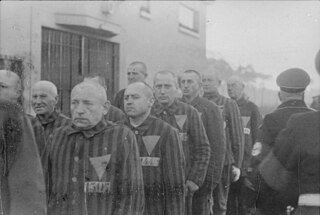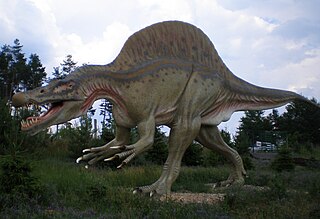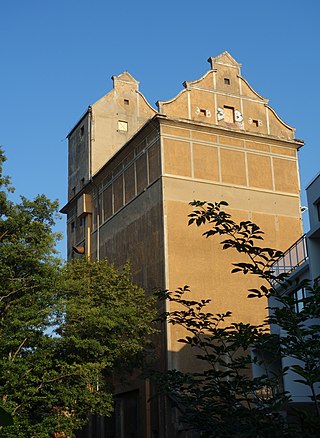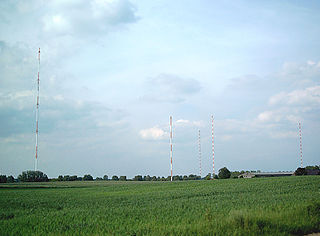5 Sights in Oranienburg, Germany (with Map and Images)
Legend
Welcome to your journey through the most beautiful sights in Oranienburg, Germany! Whether you want to discover the city's historical treasures or experience its modern highlights, you'll find everything your heart desires here. Be inspired by our selection and plan your unforgettable adventure in Oranienburg. Dive into the diversity of this fascinating city and discover everything it has to offer.
1. Memorial Sachsenhausen
Sachsenhausen or Sachsenhausen-Oranienburg was a German Nazi concentration camp in Oranienburg, Germany, used from 1936 until April 1945, shortly before the defeat of Nazi Germany in May later that year. It mainly held political prisoners throughout World War II. Prominent prisoners included Joseph Stalin's oldest son, Yakov Dzhugashvili; assassin Herschel Grynszpan; Paul Reynaud, the penultimate prime minister of the French Third Republic; Francisco Largo Caballero, prime minister of the Second Spanish Republic during the Spanish Civil War; the wife and children of the crown prince of Bavaria; Ukrainian nationalist leader Stepan Bandera; and several enemy soldiers and political dissidents.
2. Tier-, Freizeit- und Saurierpark Germendorf
The animal, leisure and dinosaur park Germendorf is an animal park with an attached dinosaur park, in which life-size replicas of dinosaurs are. There is also an area with rides that are mainly geared towards children, as well as pony rides. The park is located in the Oranienburg district of Germendorf. In addition to smaller and domestic animals, exotic animals such as zebras, elenantilopes and alpacas are also kept. There is also a petting zoo with goats that can be entered. In total, the zoo is home to 650 animals. There are also several lakes with bathing areas on the site of the park, as well as separate bathing spots for children and dogs. With a total area of 69 hectares, of which 14 hectares are eliminated on the outdoor enclosure, the Germendorf zoo is one of the largest systems of this kind in the greater Berlin area. The lake area was created as a excavation pit when building the Berlin-Rostock motorway. The structure of the zoo, which received the zoo permit in 2002, began in 1992. The dinosaur park has been on the site since 2009. The founder of the park is the former mayor Horst Eichholz. By 2014, profits from gravel mining were invested in the park. Eichholz died at the age of 84 in 2017.
Wikipedia: Tier-, Freizeit- und Saurierpark Germendorf (DE), Website
3. Silogebäude der Oranienburger Dampfmühle
With a height of around 37 metres, the Oranienburg warehouse is the second tallest building in Oranienburg and one of the landmarks of the district town. Built in 1917 as a silo building for the Oranienburg steam mill in a central location on the Havel, the building still shapes the cityscape today. Both because of its reinforced concrete construction and its baroque façade design, the building, which has been a listed building since 1995, is considered architecturally particularly valuable. The warehouse has attracted greater attention since 2016, when an investor initially wanted to renovate the building, but later applied for the demolition of the building.
4. Museum Sowjetisches Speziallager
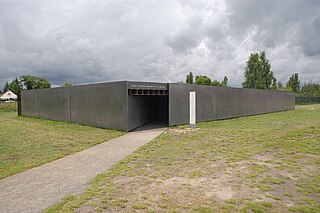
The Sachsenhausen Special Camp was a Soviet special camp in Germany from 1945 to 1950. It was partly located on the site of the former Sachsenhausen concentration camp in the Sandhausen district of the city of Oranienburg.
5. Reste des Senders Zehlendorf
The Zehlendorf radio station was a radio station in Zehlendorf, a district of Oranienburg, which was located at a distance of 35 km north of Berlin as the crow flies. The facility was built in preparation for the 1936 Summer Olympics in Germany and was initially referred to as the Rehmate radio transmitter. In the late 1990s, the various transmitters were gradually decommissioned. The surviving remains of the building complex, the transmitters and the access road were then declared an architectural monument.
Share
Disclaimer Please be aware of your surroundings and do not enter private property. We are not liable for any damages that occur during the tours.
